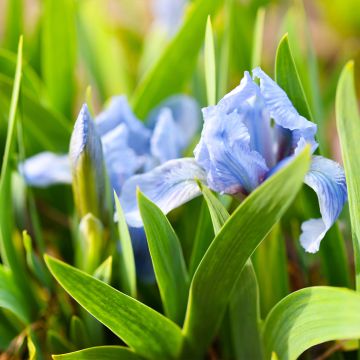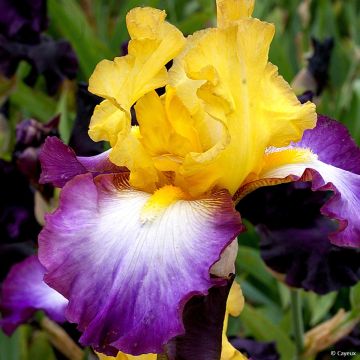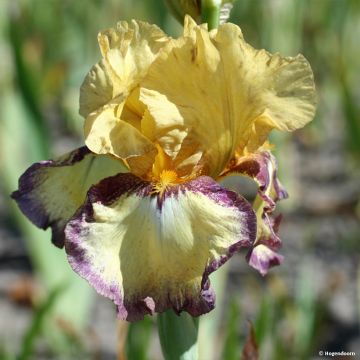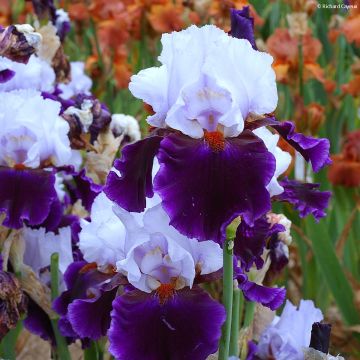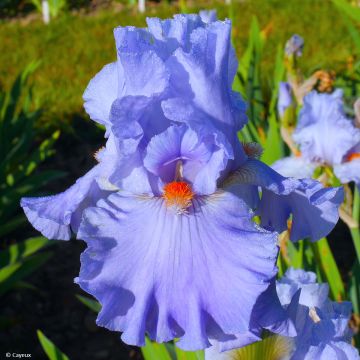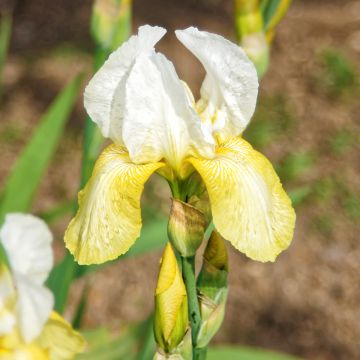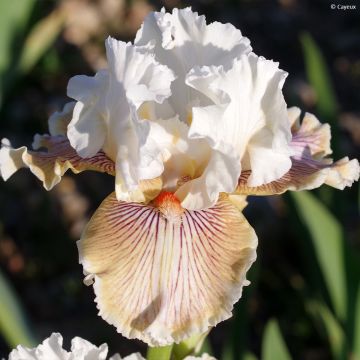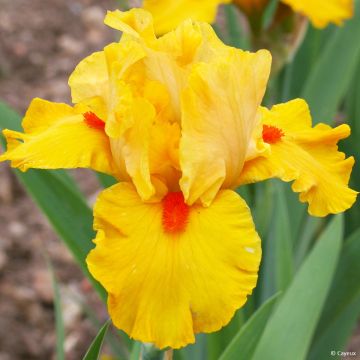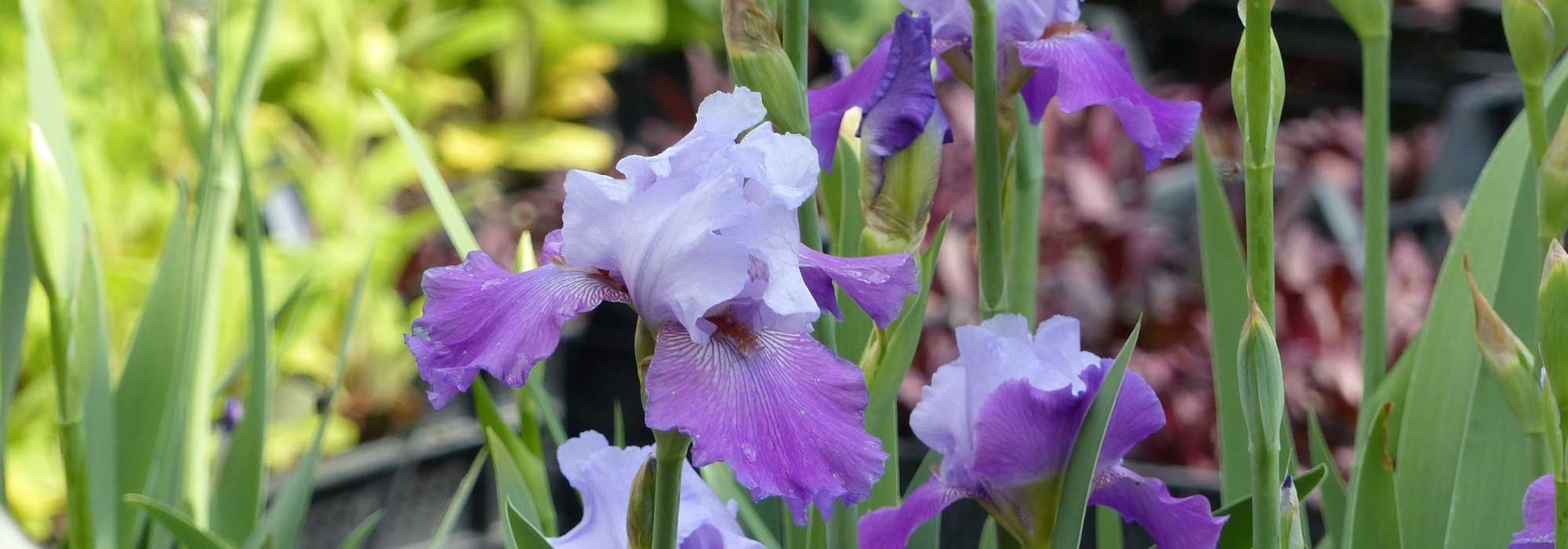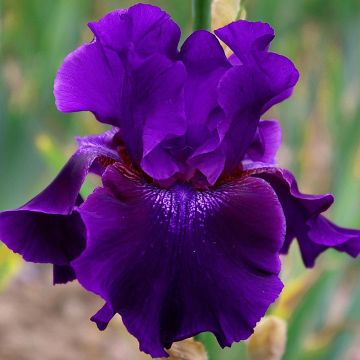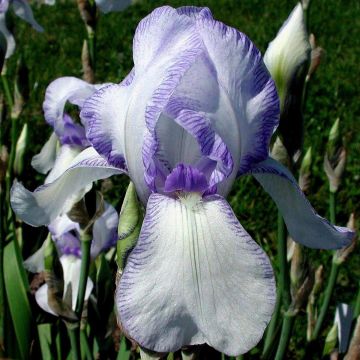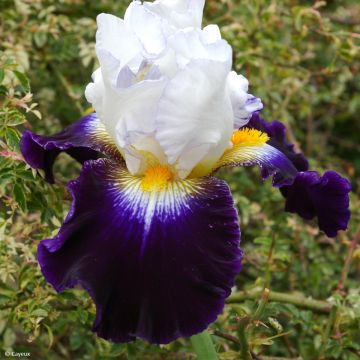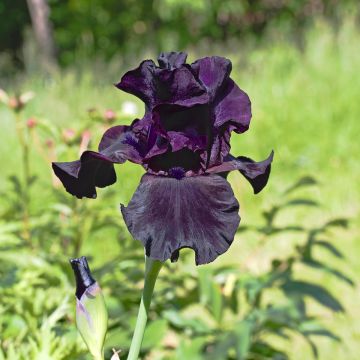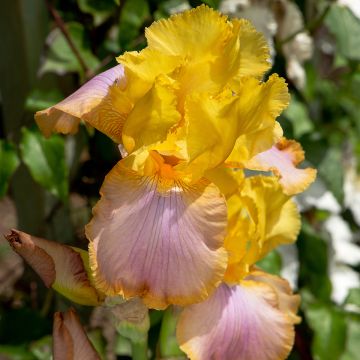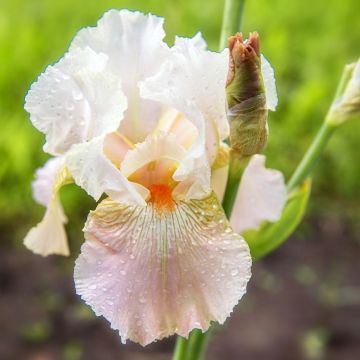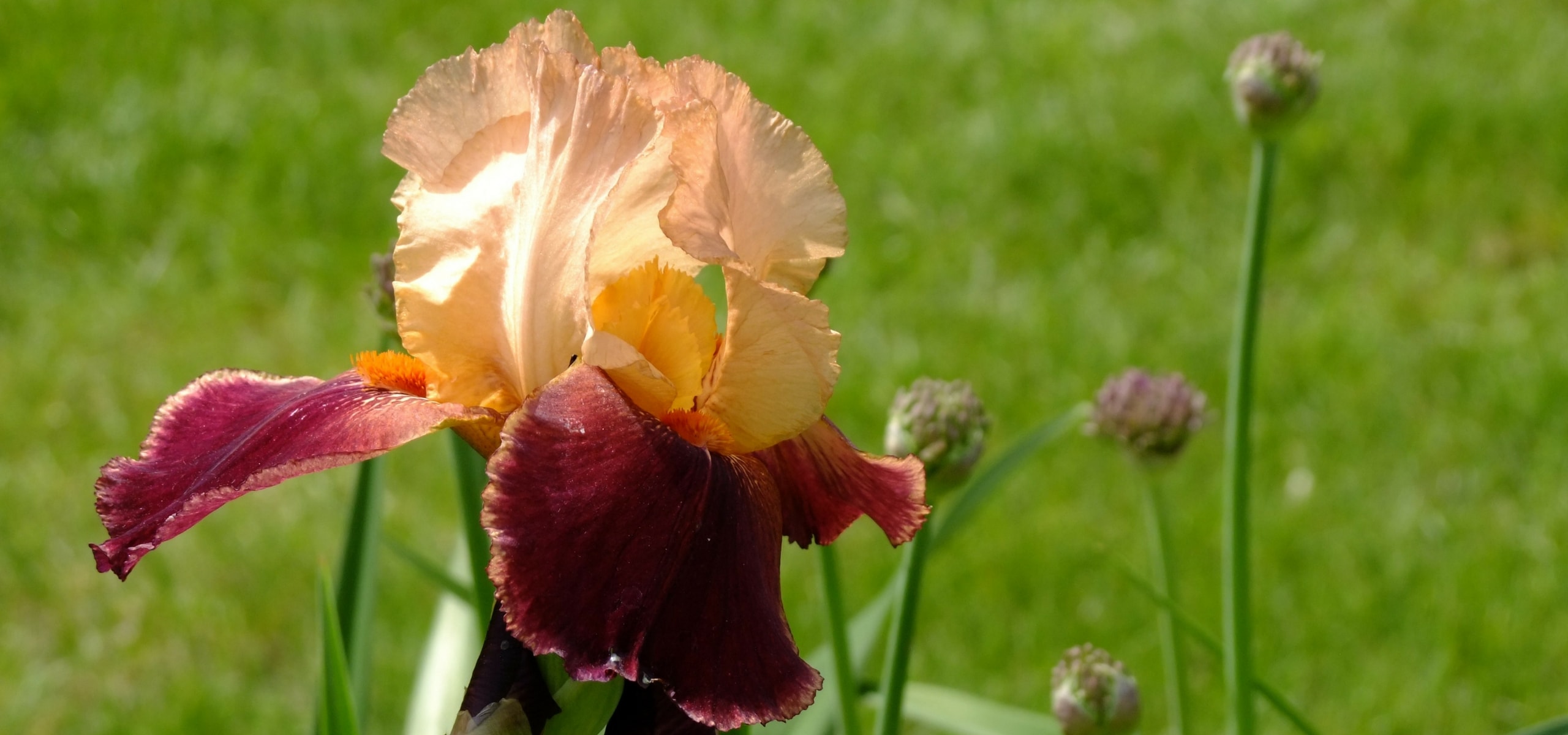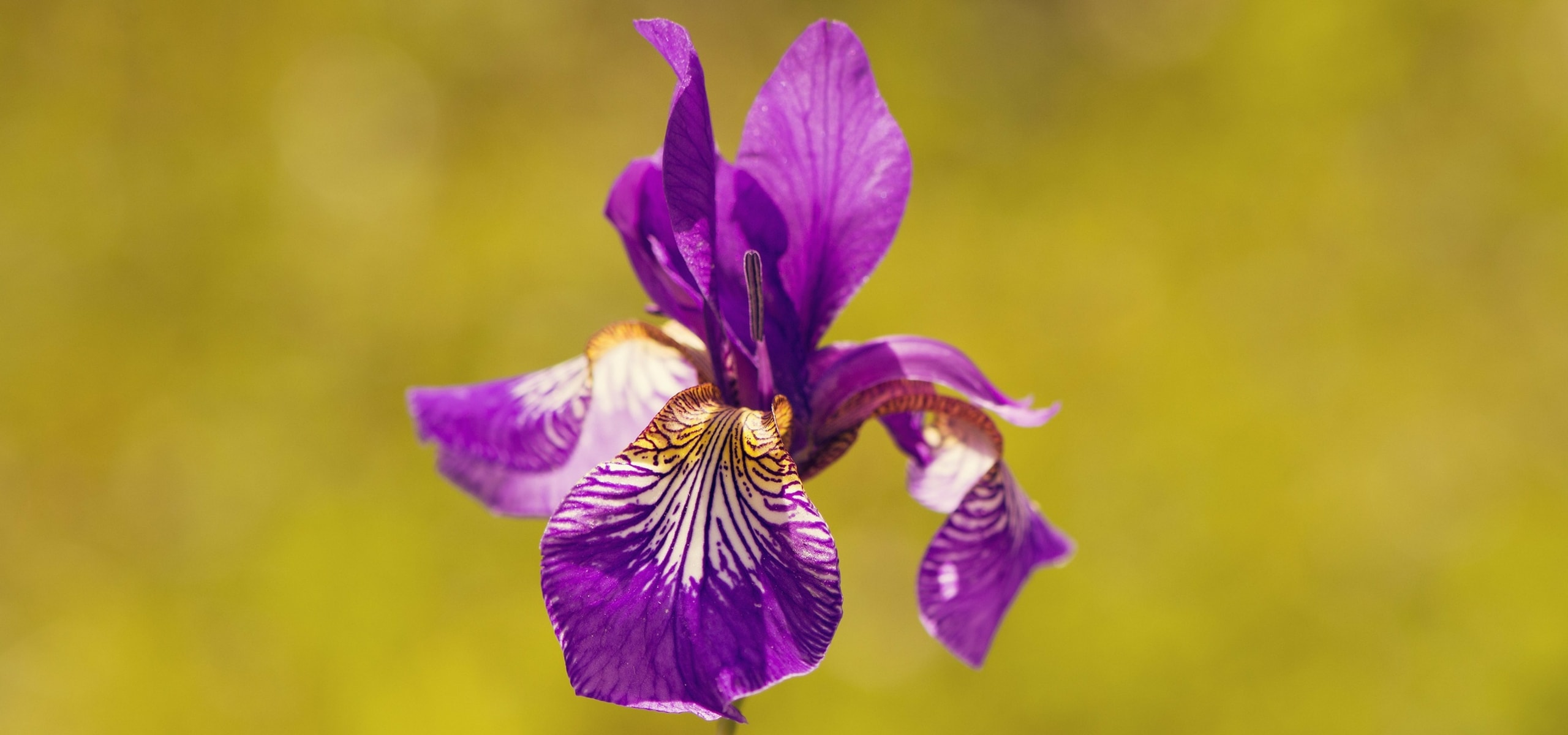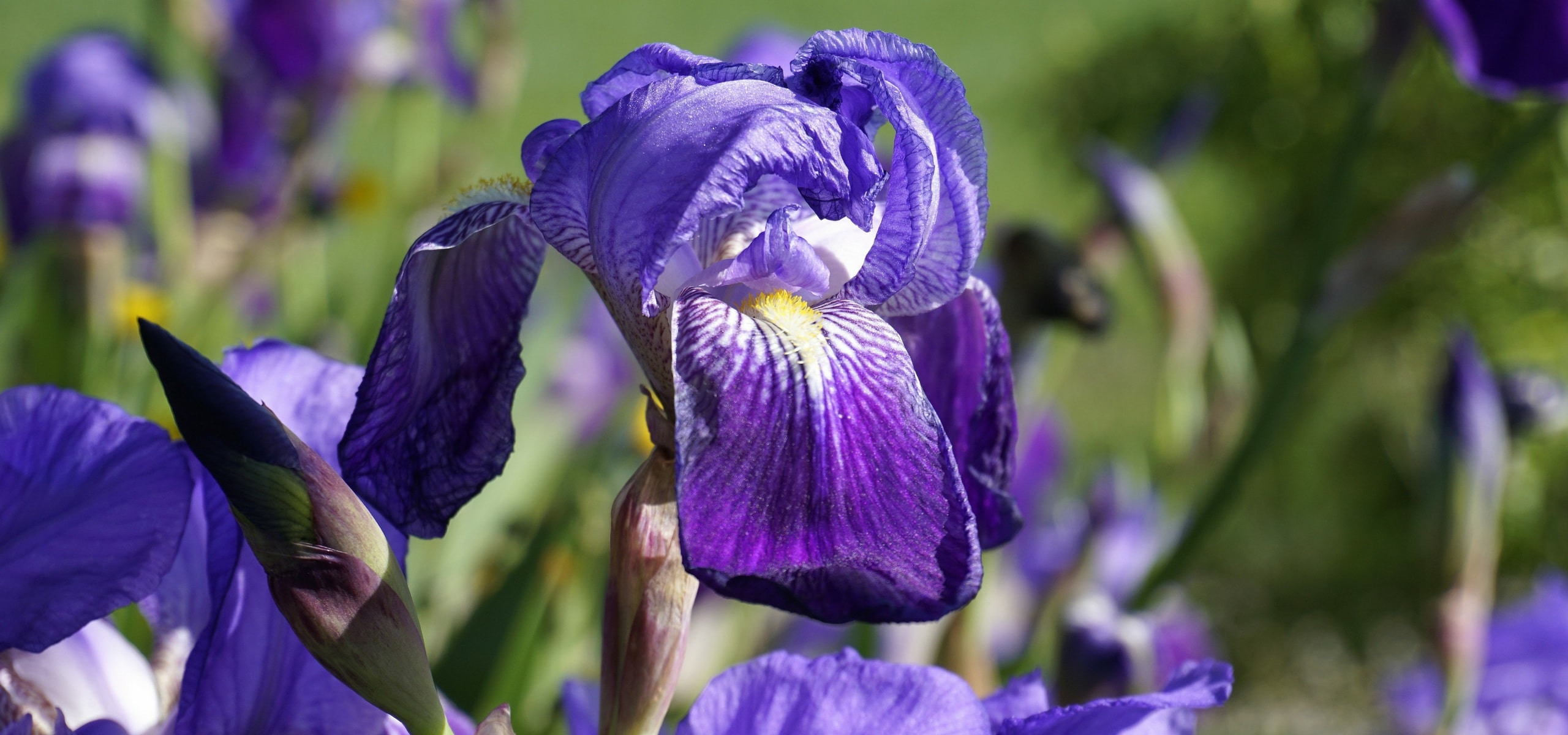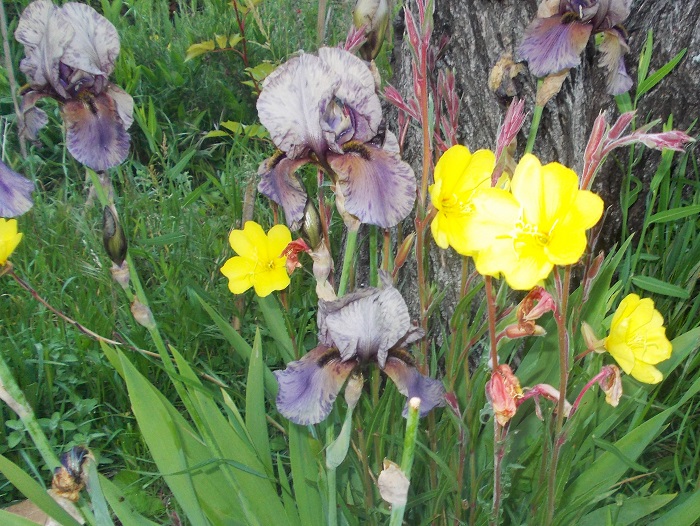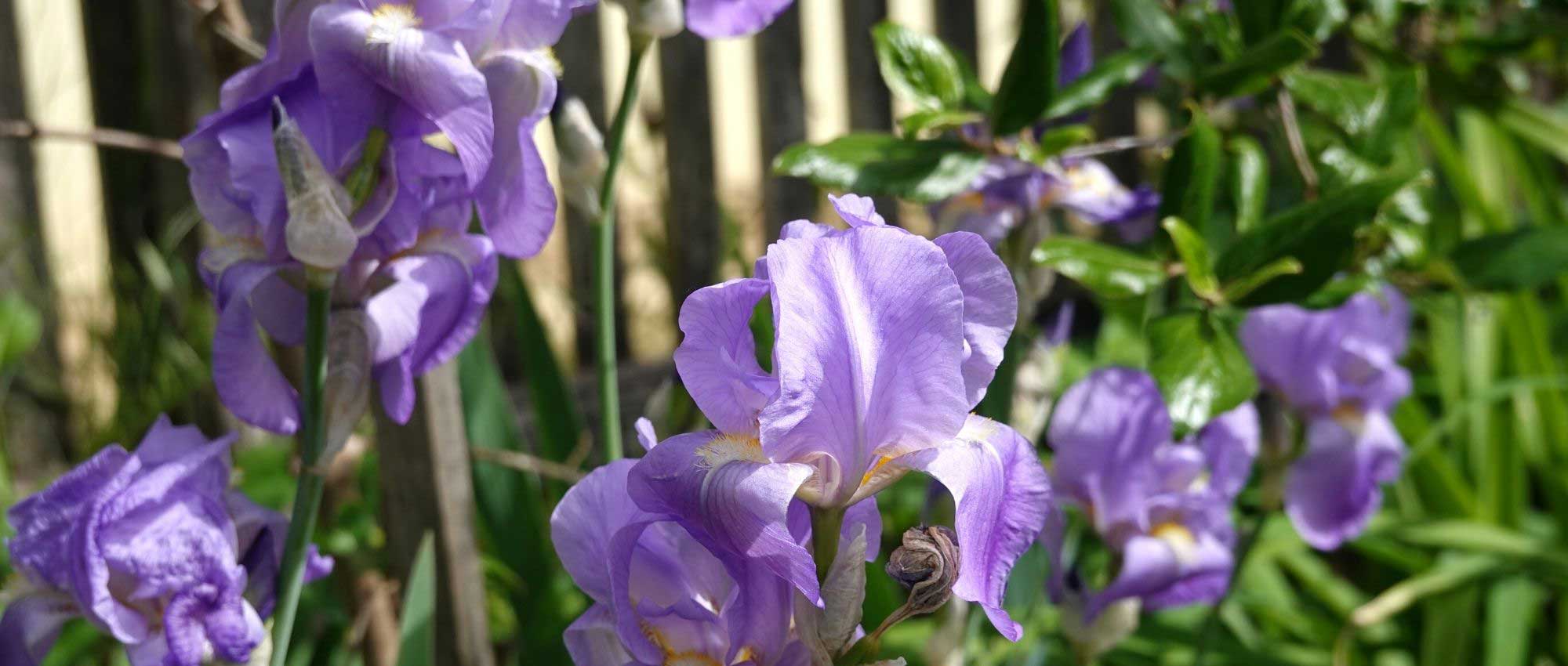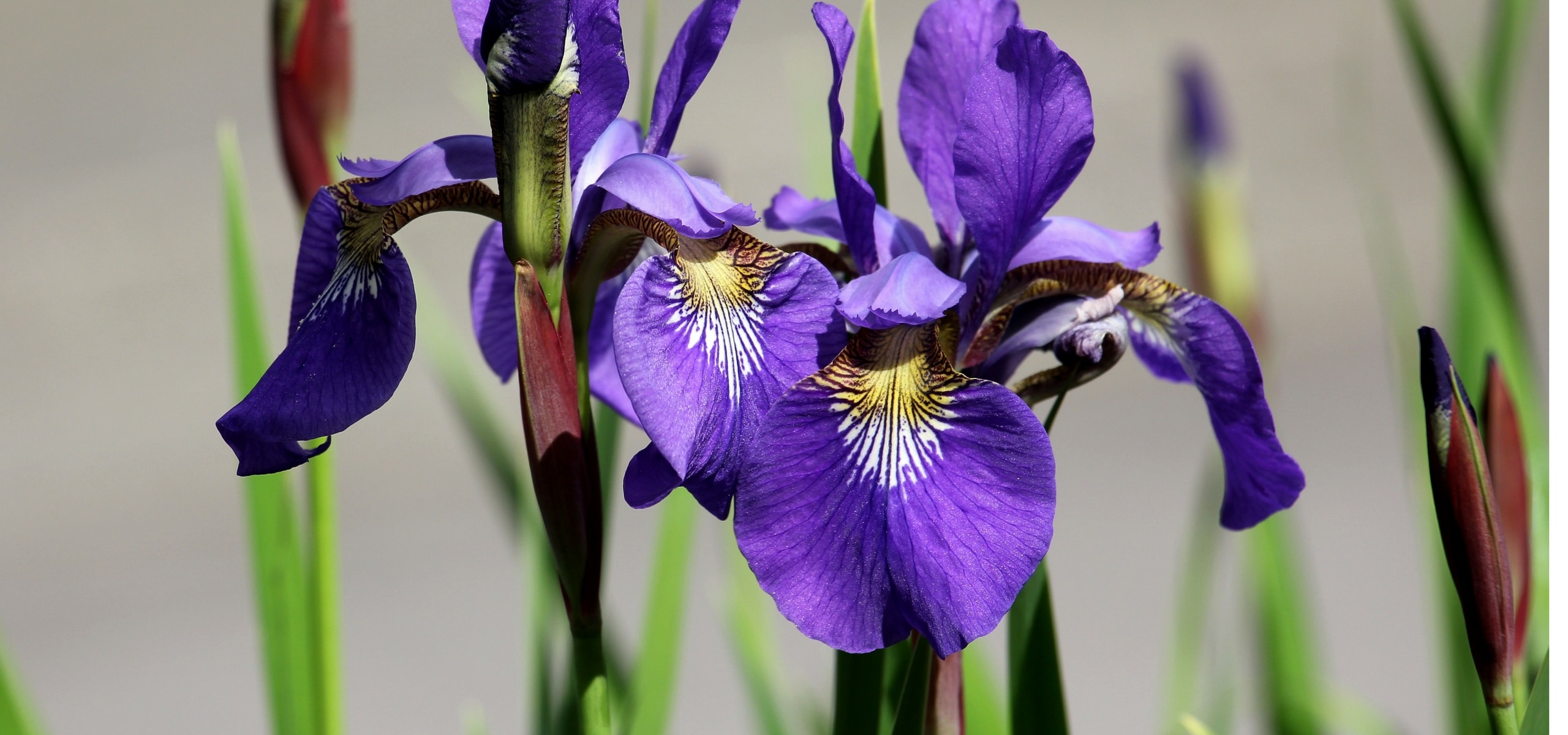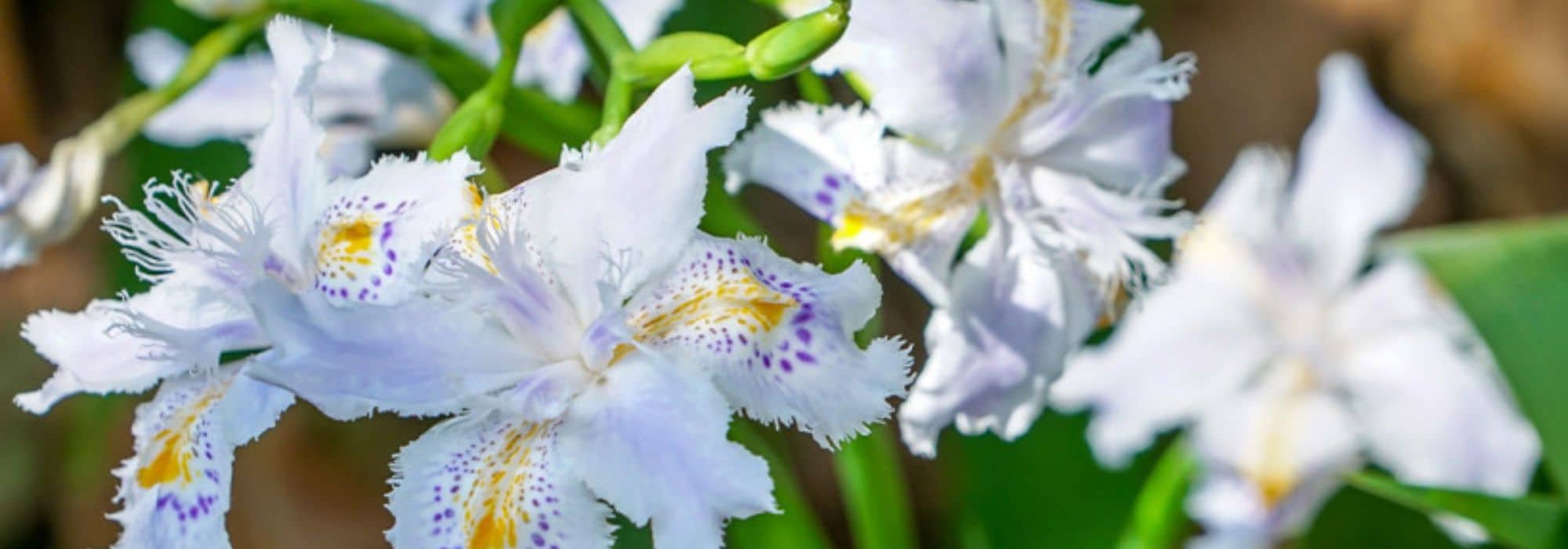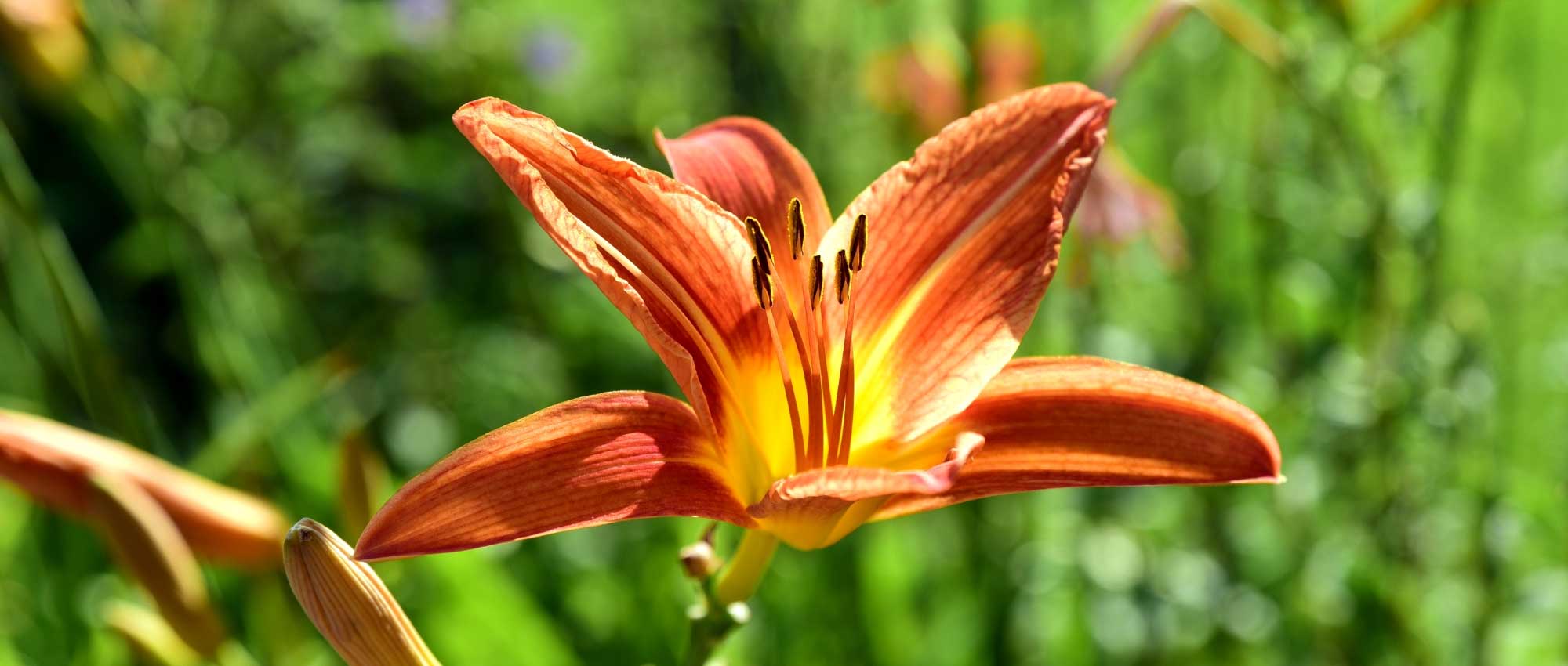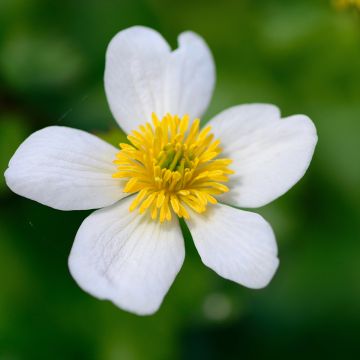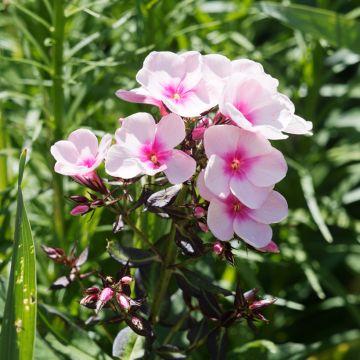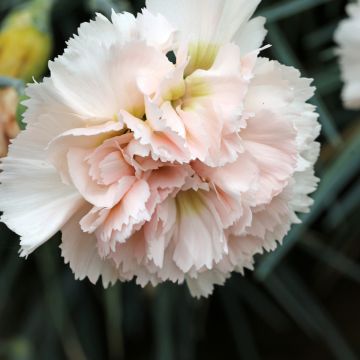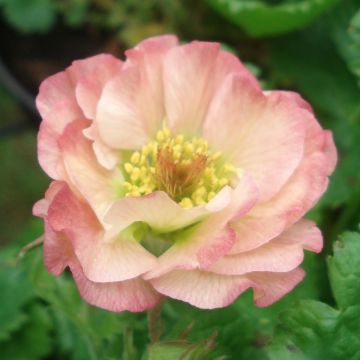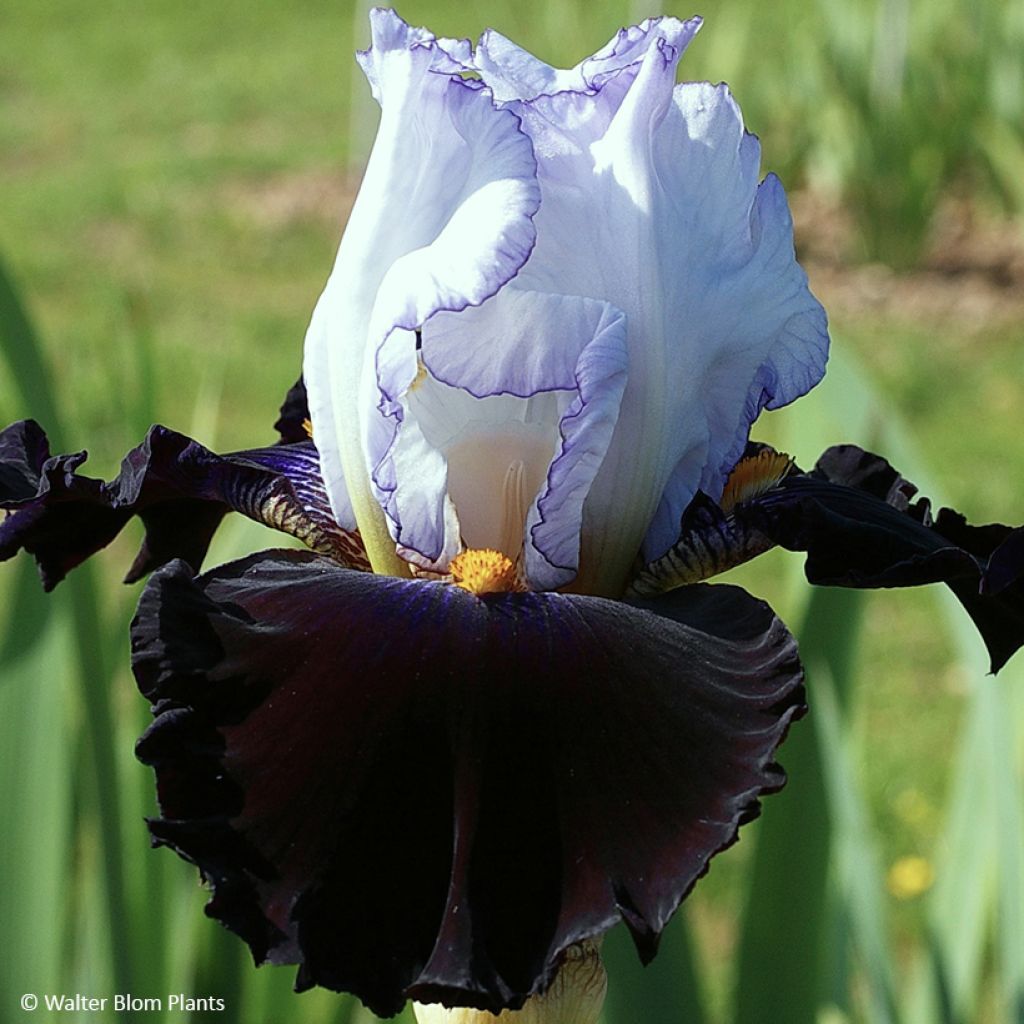

Iris germanica Domino Noir - Tall bearded iris
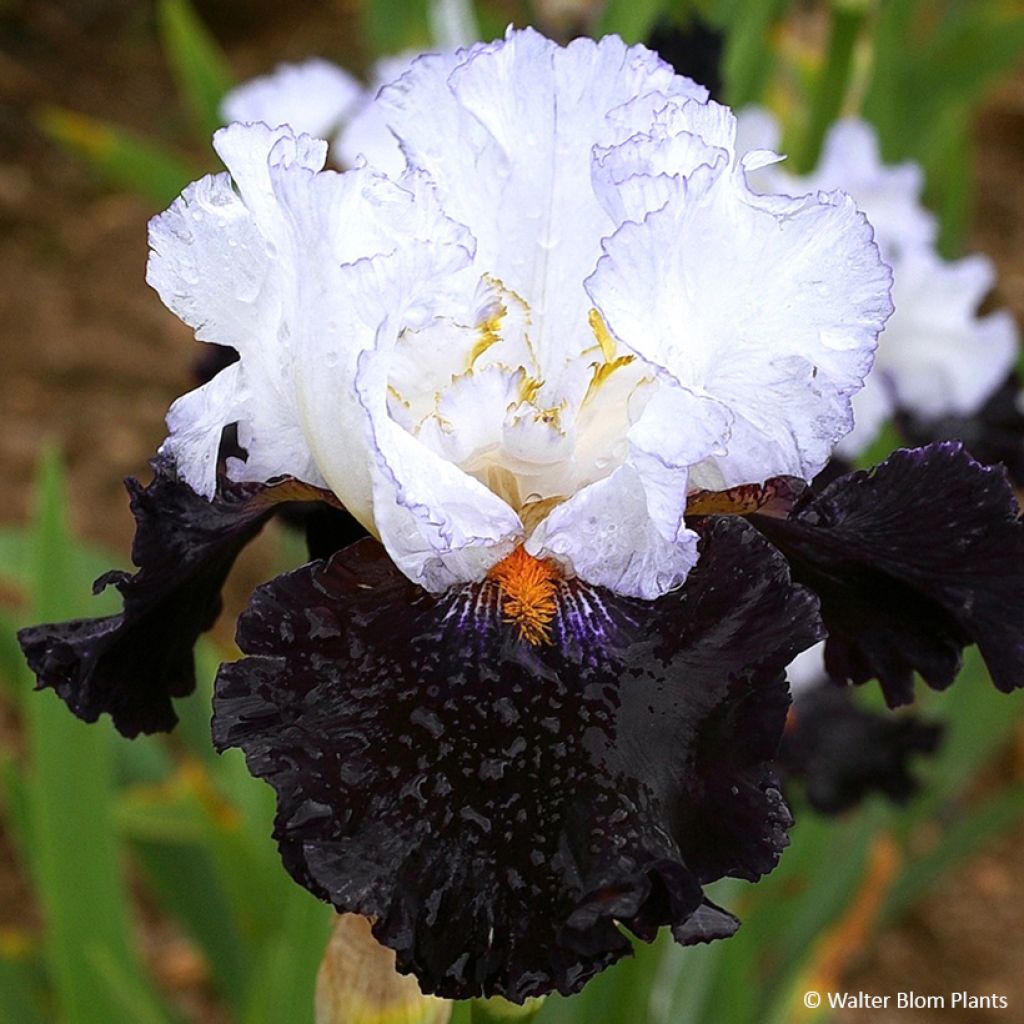

Iris germanica Domino Noir - Tall bearded iris
Iris germanica Domino Noir - Tall bearded iris
Iris germanica Domino Noir
German Iris, Bearded Iris
Special offer!
Receive a €20 voucher for any order over €90 (excluding delivery costs, credit notes, and plastic-free options)!
1- Add your favorite plants to your cart.
2- Once you have reached €90, confirm your order (you can even choose the delivery date!).
3- As soon as your order is shipped, you will receive an email containing your voucher code, valid for 3 months (90 days).
Your voucher is unique and can only be used once, for any order with a minimum value of €20, excluding delivery costs.
Can be combined with other current offers, non-divisible and non-refundable.
Why not try an alternative variety in stock?
View all →This plant carries a 12 months recovery warranty
More information
We guarantee the quality of our plants for a full growing cycle, and will replace at our expense any plant that fails to recover under normal climatic and planting conditions.
Does this plant fit my garden?
Set up your Plantfit profile →
Description
Iris germanica 'Domino Noir' is a variety of Bearded Iris with well-branched flowering stems. It produces captivating flowers with striking contrasts, combining almost pure white with deep violet, nearly black. The long flowering stems that emerge in spring each bear several flower buds. The flower unfurls its white petals delicately edged with violet, towering over the sepals, which have the texture of midnight velvet, dotted with a golden-yellow beard. This easy to grow, tall bearded iris stands out in flower beds.
The Iris is the flagship genus of the Iridaceae family, which owes its name to it. Iris germanica, native to Syria, is considered the ancestor of modern Bearded Irises, also known as Garden Irises, through a long history of successive hybridisations.
Iris 'Domino Noir' is a creation by Cayeux, a nursery in the Loiret region specialising in Iris production and breeding since the late 19th century. Registered in 2012 and released in 2013, this hybrid is the result of numerous cross-breedings involving no fewer than four varieties: 'Magnétisme', 'Sixtine C.', and 'Futuriste'. 'Domino Noir' is a variety that will reach 85 cm in height. The mid-season flowering occurs in average climates from mid-May to mid-June, earlier in mild climates and later in colder ones. The clumps of long, glaucous green, sword-shaped leaves with tapered tips produce long, branched flowering stems in spring, each bearing several flower buds. In early May, the buds begin to open, initially revealing only the tips of the black petals. Then, the three sepals, arranged in a triangle, spread apart to reveal the white petals. Finally, the six floral parts unfold, with the petals standing upright while the sepals spread horizontally before gracefully arching downward. The almost immaculately white petals are delicately wavy at the edges, subtly highlighted by a fine violet border. The very dark violet sepals appear black depending on the light, and their surface seems velvety. Their colour is accentuated by a golden-yellow beard, creating a striking contrast. The exceptionally elegant, large flowers, about 13cm wide, tastefully blend opposites with a vibrant touch and bloom for around three weeks, drawing all eyes in the garden.
Iris 'Domino Noir' offers a bold and elegant contrast. Incorporate it into a mixed flower bed alongside other flowering plants, perennials, bulbs, and bushes to extend the flowering season. Soapwort, which thrives under similar growing conditions, will help create a border carpet for your flower bed, covered in small pink flowers from May to July. In the background, plant a Japanese Spirea 'Snowmound', which will be adorned with white garlands in April-May. And to brighten your summer, nothing beats a Crape Myrtle, a flowering bush that combines elegance and exuberance.
Iris germanica Domino Noir - Tall bearded iris in pictures


Flowering
Foliage
Plant habit
Botanical data
Iris
germanica
Domino Noir
Iridaceae
German Iris, Bearded Iris
Cultivar or hybrid
Other German Iris - Bearded Iris
View all →Planting and care
Do you have a very sunny spot, rather dry in summer and well-drained in winter?
This is the ideal location for planting irises! In the shade, they grow, but do not flower. They are hardy and can be cultivated in all regions. A well-drained soil is perfect, even if it is rather dry and chalky, or even stony. Soil that is too damp encourages rhizome rot. Plant from July to September. This gives the rhizomes enough time to grow sufficiently before lifting, and then to develop new roots before winter. They should be planted as soon as they are purchased for the best results. Plan to divide irises every four years or so to give them fresh soil, and because clumps thin out from the inside over time. Divide in summer during the dormant period by lifting the clumps with a garden fork and selecting the best rhizomes (discard the small ones).
Irises have vigorous growth and require space to develop and flower well. They should be planted with spacing appropriate to the size and vigour of the variety, in the case of 'Domino Noir', approximately 45 cm (6 plants per square metre). Always take into account the direction of rhizome growth by arranging them in a star shape, with buds and leaves facing outwards, and spacing them well away from other varieties so they have room to develop.
Planting
Dig a hole wide and deep enough. Make a conical mound of soil in it on which to place the rhizome with the roots spread out. Cover the roots. It is important that the rhizome is level with the soil surface. It should not be planted in a hollow (risk of rot). Allow for the soil to settle and the iris to sink. In clay or damp ground, the rhizome should even be raised on a slight mound a few centimetres high. To help the soil cling to the roots, lightly firm the soil and water generously immediately after planting. Water if needed 2-3 times until established.
Care:
Keep the soil free of weeds by shallow hoeing, taking care not to damage the rhizomes or roots. Weeds shade the irises, retain moisture (leading to rot) and attract slugs. Similarly, cut back dry leaves. If they are diseased (reddish-edged spots from heterosporiosis), we recommend burning them. Remove faded flowers to prevent the iris wasting energy on producing fruit.
Planting period
Intended location
Care
Planting & care advice
This item has not been reviewed yet - be the first to leave a review about it.
Similar products
Haven't found what you were looking for?
Hardiness is the lowest winter temperature a plant can endure without suffering serious damage or even dying. However, hardiness is affected by location (a sheltered area, such as a patio), protection (winter cover) and soil type (hardiness is improved by well-drained soil).

Photo Sharing Terms & Conditions
In order to encourage gardeners to interact and share their experiences, Promesse de fleurs offers various media enabling content to be uploaded onto its Site - in particular via the ‘Photo sharing’ module.
The User agrees to refrain from:
- Posting any content that is illegal, prejudicial, insulting, racist, inciteful to hatred, revisionist, contrary to public decency, that infringes on privacy or on the privacy rights of third parties, in particular the publicity rights of persons and goods, intellectual property rights, or the right to privacy.
- Submitting content on behalf of a third party;
- Impersonate the identity of a third party and/or publish any personal information about a third party;
In general, the User undertakes to refrain from any unethical behaviour.
All Content (in particular text, comments, files, images, photos, videos, creative works, etc.), which may be subject to property or intellectual property rights, image or other private rights, shall remain the property of the User, subject to the limited rights granted by the terms of the licence granted by Promesse de fleurs as stated below. Users are at liberty to publish or not to publish such Content on the Site, notably via the ‘Photo Sharing’ facility, and accept that this Content shall be made public and freely accessible, notably on the Internet.
Users further acknowledge, undertake to have ,and guarantee that they hold all necessary rights and permissions to publish such material on the Site, in particular with regard to the legislation in force pertaining to any privacy, property, intellectual property, image, or contractual rights, or rights of any other nature. By publishing such Content on the Site, Users acknowledge accepting full liability as publishers of the Content within the meaning of the law, and grant Promesse de fleurs, free of charge, an inclusive, worldwide licence for the said Content for the entire duration of its publication, including all reproduction, representation, up/downloading, displaying, performing, transmission, and storage rights.
Users also grant permission for their name to be linked to the Content and accept that this link may not always be made available.
By engaging in posting material, Users consent to their Content becoming automatically accessible on the Internet, in particular on other sites and/or blogs and/or web pages of the Promesse de fleurs site, including in particular social pages and the Promesse de fleurs catalogue.
Users may secure the removal of entrusted content free of charge by issuing a simple request via our contact form.
The flowering period indicated on our website applies to countries and regions located in USDA zone 8 (France, the United Kingdom, Ireland, the Netherlands, etc.)
It will vary according to where you live:
- In zones 9 to 10 (Italy, Spain, Greece, etc.), flowering will occur about 2 to 4 weeks earlier.
- In zones 6 to 7 (Germany, Poland, Slovenia, and lower mountainous regions), flowering will be delayed by 2 to 3 weeks.
- In zone 5 (Central Europe, Scandinavia), blooming will be delayed by 3 to 5 weeks.
In temperate climates, pruning of spring-flowering shrubs (forsythia, spireas, etc.) should be done just after flowering.
Pruning of summer-flowering shrubs (Indian Lilac, Perovskia, etc.) can be done in winter or spring.
In cold regions as well as with frost-sensitive plants, avoid pruning too early when severe frosts may still occur.
The planting period indicated on our website applies to countries and regions located in USDA zone 8 (France, United Kingdom, Ireland, Netherlands).
It will vary according to where you live:
- In Mediterranean zones (Marseille, Madrid, Milan, etc.), autumn and winter are the best planting periods.
- In continental zones (Strasbourg, Munich, Vienna, etc.), delay planting by 2 to 3 weeks in spring and bring it forward by 2 to 4 weeks in autumn.
- In mountainous regions (the Alps, Pyrenees, Carpathians, etc.), it is best to plant in late spring (May-June) or late summer (August-September).
The harvesting period indicated on our website applies to countries and regions in USDA zone 8 (France, England, Ireland, the Netherlands).
In colder areas (Scandinavia, Poland, Austria...) fruit and vegetable harvests are likely to be delayed by 3-4 weeks.
In warmer areas (Italy, Spain, Greece, etc.), harvesting will probably take place earlier, depending on weather conditions.
The sowing periods indicated on our website apply to countries and regions within USDA Zone 8 (France, UK, Ireland, Netherlands).
In colder areas (Scandinavia, Poland, Austria...), delay any outdoor sowing by 3-4 weeks, or sow under glass.
In warmer climes (Italy, Spain, Greece, etc.), bring outdoor sowing forward by a few weeks.






























